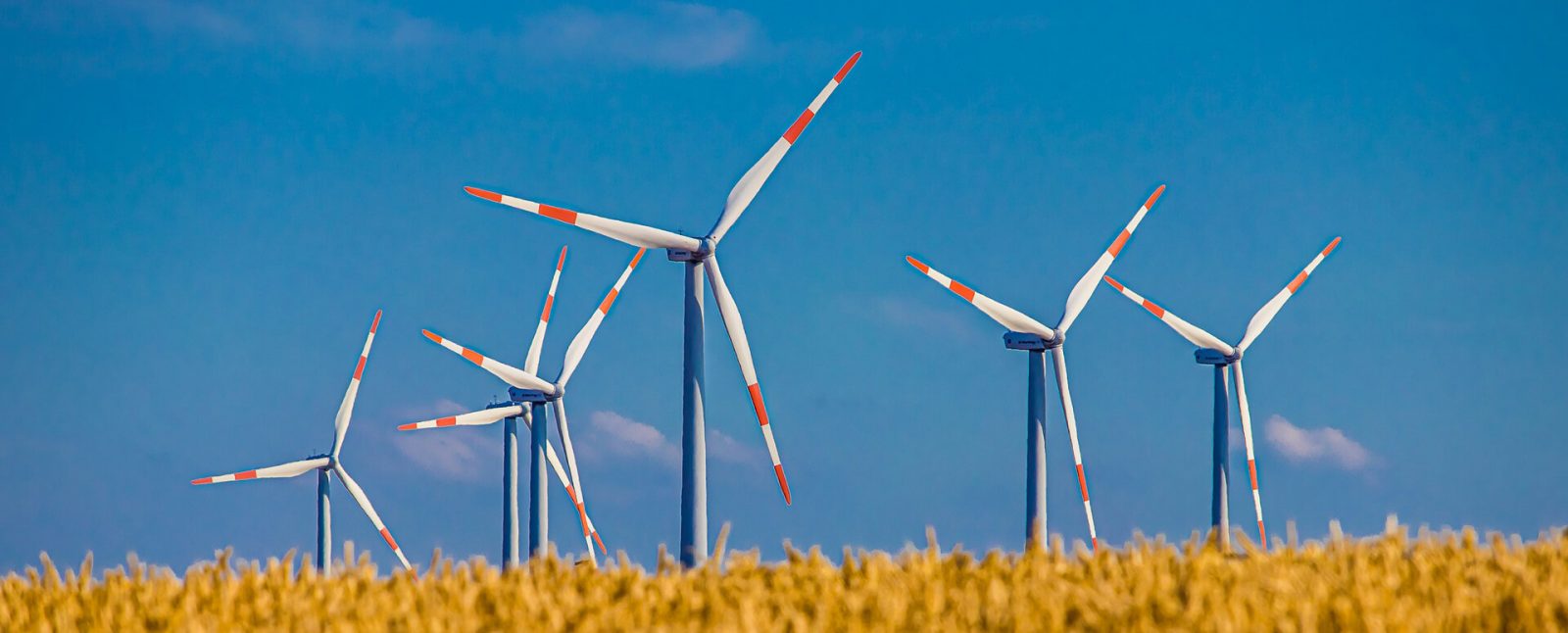Introduction
As the world fully embraces clean technology, the relevance of components like slip rings that facilitate energy transfer in renewable energy generation becomes increasingly significant. Slip rings play a vital part in the implementation and effectiveness of renewable energy systems. Understanding these fascinating components will help unlock their potential in renewable energy generation.
Understanding Slip Rings
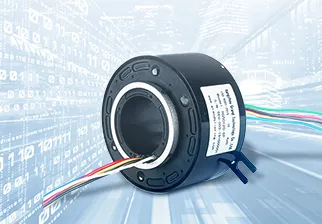
Slip rings, while appearing relatively inconspicuous, play a pivotal role in power generation and transmission systems. They are the silent facilitators enabling the seamless operation of rotational machinery, the backbone of many renewable energy systems. This section delves into a broad overview of the fundamental principles of slip rings, providing a detailed explanation of their function and the different types available. Understanding each feature and its implications will be a significant step in tapping their potential to harness renewable energy.
Definition and Function
At their simplest, slip rings, also known as electric swivels, rotary electrical interfaces, or rotary electrical joints, are devices that provide a method of making an electrical connection through a rotating assembly. These electromechanical devices can transmit electrical power, and analog or digital signals from a stationary structure to a rotating component, enabling the continuous flow of power or data.
The essence of their operation lies in their unique design that consists of a stationary part, also known as the stator, and a rotating part, the rotor. These two parts are typically separated by an insulated gap. The stator holds the electrical connections that remain stationary, while the rotor, connected to the moving component, rotates with it. A conductive brush, usually made of precious metals or alloys, maintains electrical contact between the stator and rotor across this gap, allowing uninterrupted transfer of power or data even with continuous rotation of the rotor.
This functionality has been foundational in the realm of renewable energy, where machinery is required to rotate freely while maintaining consistent transmission of energy or data, thus maximizing efficiency in energy production.
Different Types and Configurations
Based on varying operational requirements, differing types of specification prerequisites, various technologies, environments, or purposes, numerous assortments of slip rings are available. Understanding each type’s unique configuration and application is crucial to making an informed decision when implementing them in renewable energy systems.
Traditional Ring and Brush Design
This is perhaps the most recognized form of a slip ring, featuring a ring of conductive material, such as copper, which rotates along with the rotor, against one or more stationary brushes. This design, while simple, is highly effective for a wide range of applications.
Capsule Slip Rings
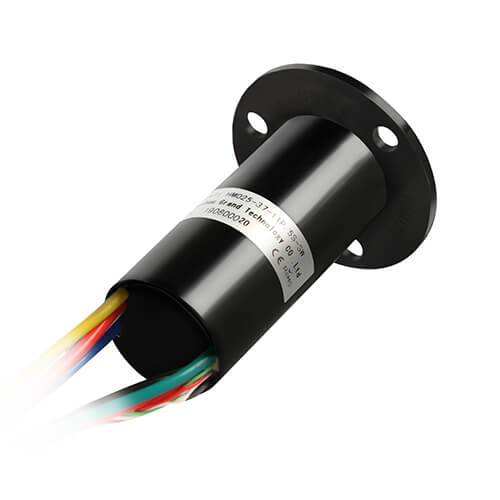
Also referred to as miniature slip rings, they are miniature in size and are ideally suited for systems with space limitations. Despite their size, these rings do not compromise on performance and can handle both power and signal transmission.
Pancake Slip Rings

These slip rings have a flat, disc-like design where the rings are arranged on concentric planes. They are used where length is a limiting factor but where height is not an issue.
Wireless Slip Rings
A more modern iteration, these slip rings, as their name suggests, do not require physical contact for transmission, reducing wear and tear. They use technologies like radio transmission, induction, or microwave to transmit power and data.
Fiber Optic Rotary Joints (FORJ)
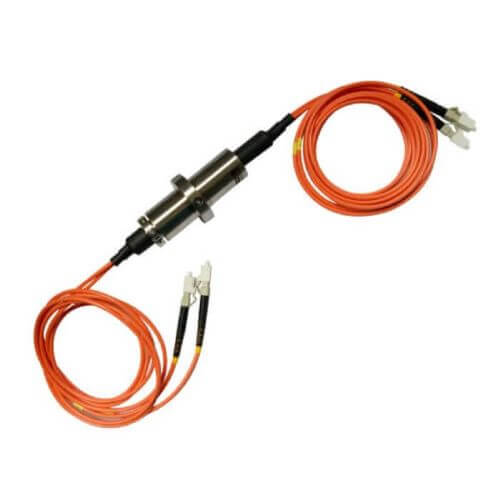
This type of slip ring is designed to offer rotational capability to a fiber optic line while maintaining the integrity of the data being transmitted. They are ideal for high-speed data transmission and in environments where electromagnetic interference is a concern.
Ethernet Slip Rings
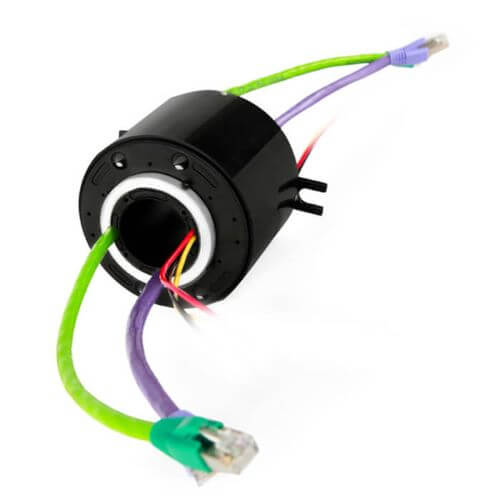
For high-speed data transmission and communication protocols, Ethernet Slip Rings are often leveraged. They are known for their ability to handle complex and high-performance data systems.
Hybrid Slip Rings
These units combine several different types of transmission, like power, data, or gases, in one unit. They are made in order to fit the exact specifications of a use case.
When choosing the appropriate slip ring, parameters such as operating speed, the number of circuits, current and voltage levels, the need for data or signal transmission, and the operating environment (whether indoor, outdoor, or in harsh conditions) are taken into account. It’s these configurations that allow slip rings to become an integral component in a multitude of renewable energy systems.
Applications in Renewable Energy Systems
Renewable energy systems are the pinnacle of sustainable power generation, and slip rings are the key components driving their effective harnessing of natural resources. In diverse applications like solar, wind, and hydroelectric power generation, slip rings facilitate the seamless transmission of power and data.
Wind Turbines

Within wind turbines, slip rings play a critical role in ensuring smooth and uninterrupted transfer of electrical power from the rotating blades and hub system to the stationary power grid. These slip rings are designed and manufactured in a manner that enables them to withstand the mechanical stress subjected to wind forces, as well as the varying and often harsh environmental conditions they operate under.
During operation, wind turbines have to constantly change the orientation or pitch angle of their blades, enabling them to face the wind direction and capture maximum wind energy. Besides, these turbines are also subjected to yaw movements to maintain proper alignment with the prevalent wind. In both these cases, slip rings work silently in the background, enabling blade and yaw pitch control systems, and at the same time maintaining a consistent flow of energy from the generator output to the grid.
Slip rings in wind turbines may be integrated into the nacelle, the hub, or the main shaft. Their precise positioning is essential to maintain the optimum performance of the turbines, reduce wear, and ensure a longer operational life. The choice of slip ring in a wind turbine depends on factors such as power requirements, voltage levels, operational speed, and environmental conditions.
Solar Trackers
Solar trackers are dynamic solar energy harvesting systems designed to maximize energy production output by continuously adjusting the photovoltaic panel orientation to closely follow the sun’s path throughout the day. In this application, slip rings have a dual role to play; not only do they allow the solar panels to rotate, maintaining alignment with the sun, but also continuously transmit electricity generated to the stationary grid.
The slip rings used in solar tracker systems are responsible for transferring both power and signals to and from the rotating components of the panels. This functionality ensures a stable connection even as the solar array moves to keep the panels facing the sun, increasing the efficiency of solar energy production.
While solar trackers can function using both single-axis and dual-axis configurations, each system requires a specialized slip ring design that accounts for the unique requirements of each movement style, ensuring flawless performance regardless of the configuration.
Other Renewable Energy Applications
Apart from wind turbines and solar trackers, slip rings find their purpose in a variety of other green energy systems. Their versatile operational capabilities make them functional across these different forms of renewable energy power generation.
Hydroelectric Turbines
Hydroelectric power generation systems utilize the potential energy of water to generate electricity. In these systems, slip rings are employed to transmit power and control signals from the rotating generator and hydraulic mechanisms to the stationary grid.
Tidal Power Systems
Tidal power systems leverage the ebb and flow of ocean tides to generate power. In these mechanisms, slip rings are called on to address the power and control needs of undersea turbines, ensuring consistent energy transfer from the point of generation to the grid.
Wave Energy Systems
Floating wave energy devices harness the energy of ocean waves for power generation. These systems use slip rings to facilitate power transmission and communication through submerged cables.
Ocean Turbines
These underwater turbines harness the kinetic energy of ocean currents to generate power. They use slip rings to maintain a steady inflow of power while accommodating the rotary movement of the turbine and its associated components.
Considering the increasing global dependency on renewable energy sources, the importance of slip rings in the operation and maintenance of these alternative energy systems cannot be overstated. By adhering to rigorous performance standards and ensuring compatibility across various applications, slip rings play a pivotal part in making the dream of environmental sustainability a reality.
Advances in Slip Rings for Renewable Energy
Slip rings are essential components in the renewable energy sector, and they continue to evolve rapidly to match the growing technological progress and demands of these applications. As a result, manufacturers are focusing on vital aspects such as increased reliability, improved efficiency, and greater adaptability to provide optimized solutions catering to the unique requirements of renewable energy systems.
Improved Reliability and Longevity
In renewable energy systems—such as wind turbines—reliability and longevity are critical aspects as they face continuous operation in varying and sometimes harsh environmental conditions. Recent advancements in slip ring design and the materials used in their construction have led to improved durability and reduced maintenance needs.
- Enhanced Brush Materials: The introduction of precious metal and alloy brushes has significantly increased the operational life of slip rings, offering low electrical noise, reduced maintenance intervals, and minimal debris formation in comparison to traditional brushes made of graphite or other materials.
- Contact Surface Improvements: Polishing and refining the surface of the conductive rings in slip rings have led to reduced friction and wear, enabling smoother operation and a longer operational life.
- Refined Seals and Enclosures: Improve protection against the ingress of dust, moisture, and other contaminants and prevent premature component failures due to harsh environmental conditions, especially in applications like wind turbines and solar trackers.
Increased Efficiency and Performance
As renewable energy systems continue to push the envelope in terms of performance, slip rings have evolved in parallel to match these advancements. The latest developments in slip ring technology have boosted efficiency and power output in complex energy generation systems.
- High-speed Data Transmission: Ethernet and fiber optic slip rings now enable high-speed data transmission with negligible loss, supporting advanced communication devices and control systems.
- Low Electrical Noise: The use of advanced materials for brushes has resulted in reduced electrical noise, improving signal-to-noise ratio during data transfer or signal transmission.
- Optimized Design: Precision-engineered designs have enabled slip rings to lower energy loss, significantly increasing their overall performance in the renewable energy sector.
Customization and Adaptability
Renewable energy applications often have unique requirements and specifications due to the variety of environments and conditions they operate in. Contemporary slip rings have embraced this challenge, offering greater customization and adaptability.
- Hybrid Slip Rings: By combining different types of transmissions into a single unit – such as power, data, or gases – these slip rings can be designed to meet application-specific requirements.
- Configurable Options: Manufacturers now offer various modular options and add-ons to meet unique application requirements in terms of mounting, electrical connection types, or capabilities.
- Application-specific Materials: By selecting suitable materials, such as specialized brushes and sealing materials, manufacturers can develop slip rings tailored for use in challenging environments like marine or high-temperature locations.
By focusing on reliability, efficiency, and adaptability, the advancements in slip ring technology have made them indispensable components in renewable energy systems. As the quest for sustainable energy generation progresses, the continued evolution of slip rings remains pivotal in furthering the goal of a cleaner energy future.
User-Interest Areas
As users become more informed and involved in the renewable energy domain, several areas of interest are emerging related to the application and deployment of slip rings. Among these areas, conducting a cost-benefit analysis, understanding installation and maintenance practices, being aware of standards and certifications, and knowing about product selection and supplier evaluation are of particular importance to industry professionals and enthusiasts alike.
Cost-Benefit Analysis
Understanding comparative costs and projected benefits is crucial for organizations or individuals deciding to invest in renewable energy systems involving slip rings.
- Cost Factors: These considerations include the initial purchase price, associated installation costs, expected maintenance expenses over the slip ring’s lifespan, and the cost of potential downtimes in energy production due to slip ring failure.
- Benefits Factors: The benefits encompass operational efficiency, longevity and reliability, savings on energy costs, and potential incentives or subsidies provided by governments and other entities for using renewable energy sources.
Conducting a comprehensive cost-benefit analysis leads to informed decision-making, ensuring the intended renewable energy project’s economic feasibility and long-term sustainability.
Installation and Maintenance Best Practices
Installing and maintaining slip rings correctly is essential to their optimal performance and longevity.
- Installation Best Practices: This process involves the proper positioning of the slip ring, suitable torque settings for attachment, appropriate cable management, and fulfilling the requirements of specific environmental conditions.
- Maintenance Best Practices: These typically revolve around routine visual inspections, regular electrical testing for potential malfunctions, debris cleaning, and necessary replacements.
By implementing these best practices, the user can guarantee a smooth operation of their renewable energy systems and minimize potential downtimes.
Standards and Certifications
Standards and certifications play a significant role in ensuring the quality, safety, and environmental impact of slip rings used in renewable energy systems. Familiarity with these regulatory aspects is vital for prospective slip ring buyers.
Key certifications for slip rings include CE marking (ensuring conformity with health, safety, and environmental protection standards in the European Economic Area), UL (Underwriters Laboratories – a globally recognized safety certification), and ISO (International Organization for Standardization). They assure users of certain standards of safety, reliability, efficiency, and sustainability.
Product Selection and Supplier Evaluation
Choosing the right slip ring and evaluating potential suppliers is an essential facet of implementing a successful renewable energy project.
- Product Selection: This process involves assessing the specific requirements of your application (like power and signal transmission needs, expected rotational speed, environmental conditions, and maintenance restrictions), evaluating the different products available in the market, and selecting the most suitable option.
- Supplier Evaluation: Checking the supplier’s reliability, reputation, certifications, technical support, after-sales service, and warranty policies are critical in ensuring a smooth and long-term operational experience.
Taking into account these user-interest areas will enable individuals and organizations to make informed choices on their journey toward renewable energy adoption. By giving due consideration to the investment and practicality of slip rings, adhering to best practices, and ensuring quality and supplier reliability, they can contribute significantly to achieving global energy sustainability goals.
Conclusion
Slip rings form an essential link in renewable energy systems, including wind turbines and solar trackers, ensuring seamless power, and data transfer. The continuous advancements in slip ring technology focus on enhancing their reliability and lifespan, boosting efficiency, and offering tailored solutions to match varying application requirements.
For renewable energy investments, understanding aspects like cost-benefit analysis, installation, and maintenance best practices, standards, and certifications, plus product selection and supplier evaluation, is paramount. Adherence to these aspects guarantees a well-performing, lasting, and feasible renewable energy system, contributing positively towards global sustainability ambitions.
FAQs about Slip Rings Applications in Renewable Energy
Sure, here are some of the Frequently Asked Questions (FAQs) about slip rings and their applications in renewable energy, along with their answers:
Q: What is a slip ring and why is it used in renewable energy systems?
A: A slip ring is an electromechanical device that allows the transmission of power and electrical signals from a stationary to a rotating structure. In renewable energy systems such as wind turbines and solar panels, it enable the free rotation of active parts without hindering energy or data transmission.
Q: How do slip rings contribute to the efficiency of a wind turbine?
A: In wind turbines, slip rings transfer power and signals regardless of the nacelle’s rotation. This function helps maintain the wind turbine’s efficiency, as the nacelle can freely rotate to face the incoming wind.
Q: Can slip rings operate under harsh environmental conditions?
A: Yes, advancements in slip ring technologies incorporate refined seals and enclosures, providing protection against dust, moisture, and other contaminants. It ensures their operation in harsh environmental conditions.
Q: What are the important factors to consider in the cost-benefit analysis of slip rings in renewable energy systems?
A: Important factors in a cost-benefit analysis include the initial purchase cost, installation and maintenance costs, possible downtimes, efficiency, reliability, and potential government incentives for utilizing renewable energy.
Q: What are the best practices for installing and maintaining slip rings in renewable energy systems?
A: Proper positioning during installation, appropriate torque settings, and suitable cable management are some of the best practices. Regular visual inspections, electrical testing, debris cleaning, and maintenance checks contribute to optimal slip ring performance.
Q: What standards and certifications should I look for when purchasing a slip ring for renewable energy applications?
A: Key certifications include CE marking, UL (Underwriters Laboratories) recognition, and ISO (International Organization for Standardization) certifications. These certifications assure safety, reliability, efficiency, and sustainability standards.
Q: How does product selection and supplier evaluation influence the performance and longevity of slip rings?
A: Choosing a slip ring that meets your specific application requirements significantly affects its performance. Evaluating suppliers on their reliability, reputation, technical support, after-sales service, and warranty policies helps ensure a seamless operation experience.
Q: Can slip rings be customized for specific renewable energy applications?
A: Yes, contemporary slip rings offer great customization, with hybrid slip rings combining different transmissions into a single unit. Numerous modular options are available to meet unique application requirements.
Q: What are some of the latest advancements in slip ring technology for renewable energy systems?
A: Enhanced brush materials, improved contact surfaces, high-speed data transmission, and optimized designs are some of the recent advancements in slip ring technology enhancing reliability, efficiency, and adaptability.
Q: What role do slip rings play in achieving global sustainability goals?
A: By enabling efficient operation of renewable energy systems, slip rings contribute to reduced dependence on fossil fuels. It helps lead the way towards a sustainable future with cleaner and renewable energy sources.
See What We Can Do

